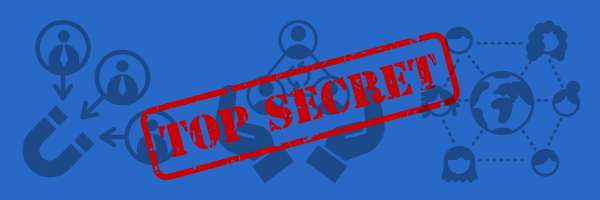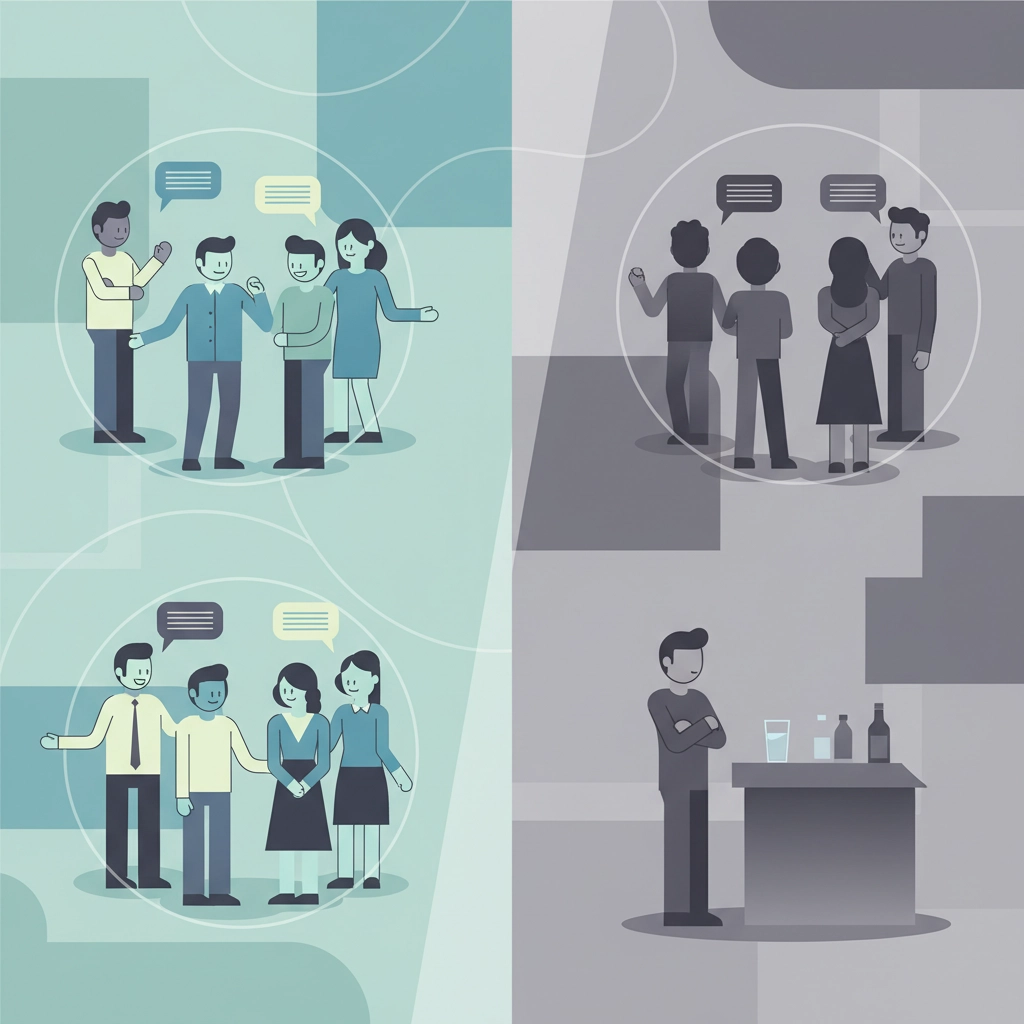The Hidden Secret to Member Retention: Why Every Member Interaction Matters
- Beth Arritt
- Oct 8
- 6 min read

Here's something most association leaders don't realize until it's too late: your biggest retention threat isn't your membership fees, outdated benefits, or even your competition. It's that awkward moment when a new member gets snubbed at their first networking event, or when someone rolls their eyes during a committee meeting, or when a longtime member makes a dismissive comment about "how things used to be better."
You probably won't even know these moments happened. But your new member will remember them forever.
The brutal truth about member retention is that every single interaction shapes whether someone stays or goes. And here's the kicker: the interactions that matter most often happen completely outside your control, between members themselves, when no staff member is around to smooth things over.
The Invisible Retention Killers
Think about your last new member orientation. You probably had everything perfectly planned. Great presentation, welcome packets, maybe even name tags with conversation starters. But what happened during the coffee break? Did established members actually welcome the newcomers, or did they cluster in their usual groups, leaving new faces standing awkwardly by the refreshment table?

These invisible moments are retention killers because they happen in the gaps between your official programming. A new member might love your educational content and think your staff is fantastic, but if they feel excluded by the existing member community, they're probably not renewing.
The psychology here is pretty straightforward. People join associations for connection and belonging just as much as they do for benefits and services. When those social needs aren't met, or worse, when someone feels actively unwelcome, all your other value propositions become irrelevant.
Why Staff Miss the Warning Signs
Association staff tend to be good at creating positive experiences during official touchpoints. You may nail the onboarding emails, your events may run smoothly, and your customer service may be top-notch. But member-to-member interactions happen in places you may not be watching or even be privy to.
They happen in the parking lot after meetings. In side conversations during workshops. In the way someone gets interrupted or ignored during a brainstorming session. In the subtle (or not-so-subtle) ways that cliques form and newcomers get frozen out.
These moments don't show up in your CRM. Nobody files a complaint form about feeling unwelcome. And they don't tend to fill out survey forms about how they were awkwardly left out of things. New members just...quietly don't renew. And you can be left wondering why your retention rates aren't where they should be, despite all your best efforts.
The Ripple Effect of Bad Member Experiences
When negative member-to-member interactions happen, they don't just affect the people directly involved. Word spreads. New members talk to each other. They share their experiences with friends who might be considering joining.
One dismissive comment from a board member can torpedo a new member's enthusiasm for months. One instance of being talked over in a committee meeting can make someone question whether they belong. And once someone decides your association isn't their kind of place, it's incredibly difficult to change their mind.

The worst part? These negative experiences often come from your most engaged members. The people who've been around forever, who serve on committees, who attend every event. They're not trying to be unwelcoming, but they've developed blind spots about what it feels like to be new.
Creating a Culture of Intentional Welcome
So how do you solve a problem you can't directly control? You make positive member interactions everyone's responsibility, not just your staff's role.
Start by having honest conversations with your leadership about the member experience beyond official programming. Ask your board members and committee chairs to think about how they interact with people they don't know well. Challenge them to notice when conversations become exclusive or when new voices get overlooked.
Have leadership and other volunteers on the lookout for new faces and people on their own at events. Be sure to have them read the room, though - someone who ducked into a corner to reply to a text or email probably doesn't want to be bothered. Someone who has been scrolling on their phone for ten minutes without engaging might be in need of a buddy.
Make welcome a skill, not just an attitude. Teach your established members specific techniques for including newcomers. Simple things like:
Introducing themselves and asking about someone's background
Bringing new people into existing conversations instead of starting separate "new member" discussions
Following up after events with people they met for the first time
Being intentional about making space for different perspectives in meetings
Set expectations clearly. Let your members know that creating a welcoming environment is part of what membership means. Include language about this in your member handbook, board orientation, and committee guidelines. Make it clear that everyone has a role in member retention. And set these expectations for online spaces in addition to in-person events.
Building Systems to Catch Issues Early
You can't be everywhere, but you can create systems that help you spot problems before they become retention disasters.
Regular check-ins matter more than you think. Don't just survey members once a year. Onboard your members at least once a week in their first month. Create touchpoints at least 60, and 90 days out for new members. And start renewal email reminders 90-120 days before the drop date. Find ways during these touchpoints to gauge their feelings on interactions with other members, not just their satisfaction with programs and services.
Train your ambassadors. Identify members who are naturally good at welcoming others and give them a formal role in helping newcomers feel included. These member ambassadors can be your eyes and ears for social dynamics you might miss. You could create a buddy system for new annual conference attendees so they feel welcome and have someone to help them navigate, or train mentors to look for new people who might be future mentee candidates. There are as many options as there are opportunities.
Create structured networking opportunities. Don't leave member connections to chance. Design activities that naturally facilitate introductions and conversations between established and new members. Think small group discussions, mentorship programs, or buddy systems for events.

Turning Members Into Retention Champions
Your best retention strategy is turning every member into someone who actively helps others feel welcome and valued. This means moving beyond hoping people will be nice to each other and actually creating systems that encourage positive interactions.
Recognize and celebrate welcoming behavior. When you see members going out of their way to include others, acknowledge it publicly. Share stories in your newsletter about members who made someone feel welcome. Make it clear that this behavior is valued and noticed.
Make introductions easier. Create member spotlights that help people learn about each other. Use name tags or topic tables that include conversation starters. Provide talking points for networking events that go beyond "what do you do for work?"
Address problems directly. When you hear about negative interactions, don't ignore them hoping they'll go away. Have conversations with the people involved. Sometimes established members genuinely don't realize the impact of their behavior.
The Long Game of Member Experience
Remember, retention isn't just about keeping people for one more year. It's about creating an environment where members feel genuinely connected to your organization and to each other. When that happens, retention takes care of itself.
The members who feel most welcome and included become your strongest advocates. They refer their colleagues. They volunteer for leadership roles. They stick around for decades instead of years.
Focus on the compound effect. Every positive member interaction creates a small deposit in your retention bank account. Over time, these deposits add up to something powerful: a reputation as an organization where people genuinely care about each other.
Track what matters. Along with your usual metrics, start measuring things like new member integration, cross-member connections, and the quality of social interactions at events. These softer metrics often predict retention better than traditional measures.
Making Every Interaction Count
The hidden secret to member retention isn't actually that hidden once you start looking for it. It's everywhere: in the way people are greeted at events, included in conversations, and made to feel like they belong.
Your job as an association leader isn't to control every interaction, but to create a culture where positive interactions are the norm. Where established members understand their role in retention. Where newcomers feel genuinely welcome, not just officially welcomed.
This doesn't require a massive budget or complicated technology. It requires intentionality about the human side of membership. It requires recognizing that every member interaction is an opportunity to build loyalty or erode it.
The associations that master this create something special: communities where people don't just renew their membership, but look forward to it. Where retention becomes less of a challenge and more of a natural outcome of the experience you've created together.
Start paying attention to those invisible moments between members. They might just be the key to unlocking the retention rates you've been working so hard to achieve.



Comments